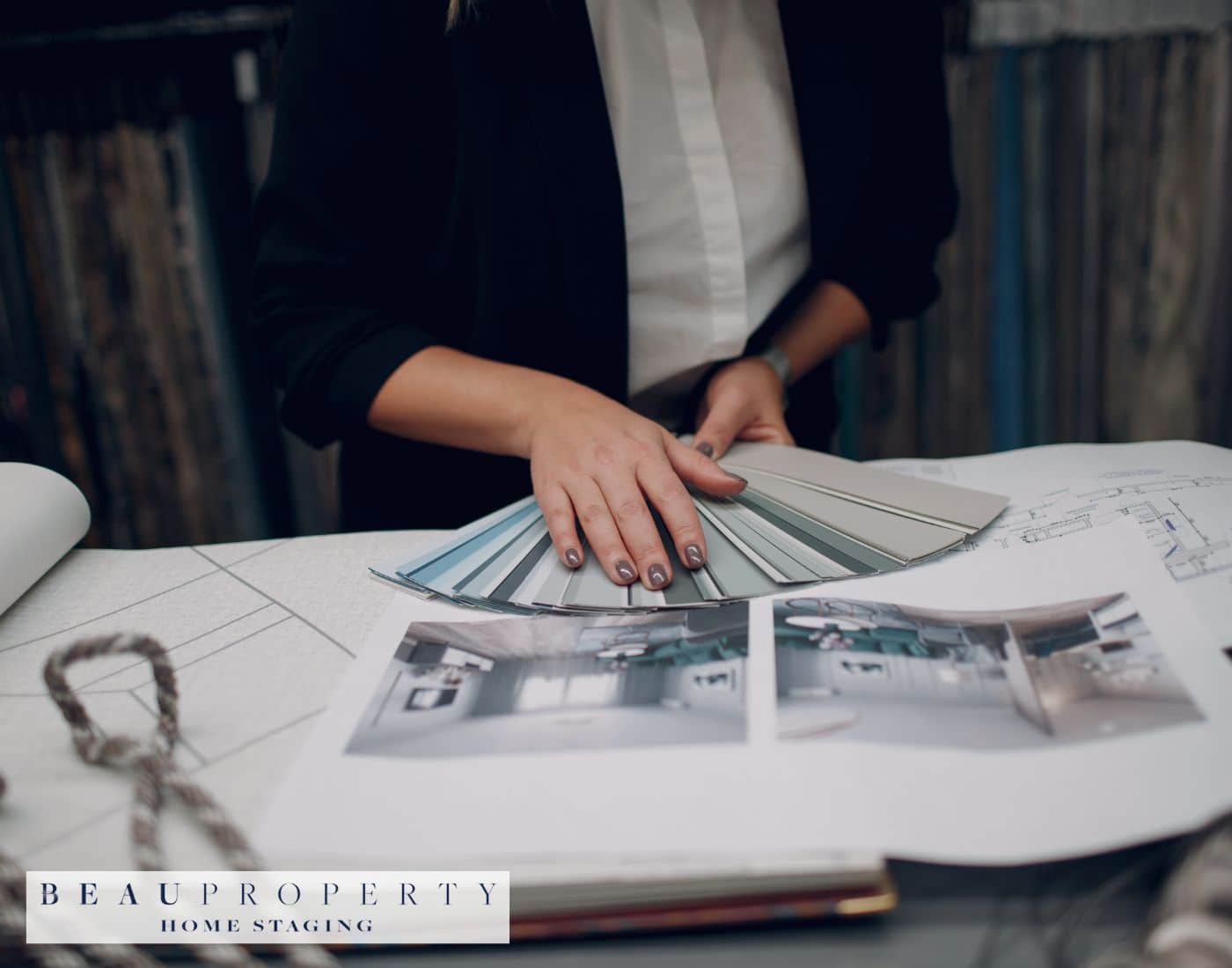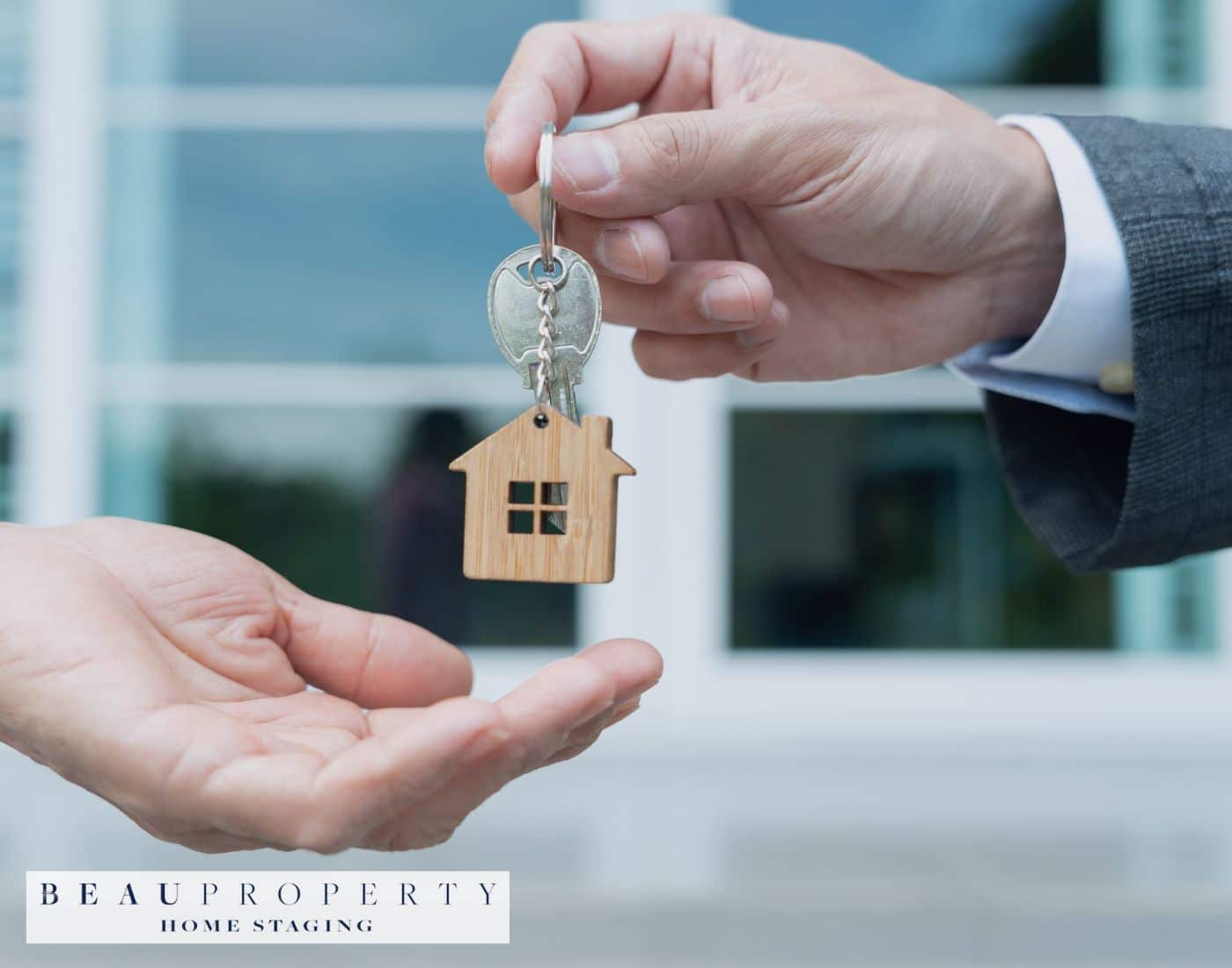The Role of Home Staging in the Real Estate Market
Home staging has emerged as a critical tactic for sellers aiming to secure quick and profitable sale times. By transforming a property into a show-ready state, home staging amplifies its appeal to the broadest range of prospective buyers. The objective is to craft an inviting space where potential buyers can effortlessly visualise their future home.
Understanding Home Staging
Home staging involves several key tasks aimed at optimal presentation:
- Decluttering: Removing excess items to create a more spacious and organised environment.
- Depersonalising: Eliminating personal items such as family photos to allow buyers to see themselves in the space.
- Optimising Layout: Arranging furniture to highlight the best features and flow of the property.
- Minor Repairs and Updates: Addressing small fixes and making cosmetic updates to improve the property’s condition.
Through these measures, home staging aims to create a neutral, welcoming atmosphere that appeals to a broad audience.
Impact on Sale Time and Price
Statistics indicate that staged homes typically spend less time on the market than their non-staged counterparts. Studies suggest that 81% of buyers’ agents find it easier to visualise properties when they are staged. Moreover, staged homes often fetch higher prices. About 75% of sellers achieve an ROI of 5-15% over the asking price when employing professional staging services.
Key Techniques for Effective Home Staging
To maximise the benefits of home staging, several techniques are essential:
- Decluttering: This step involves removing unnecessary items to present a clean, spacious home.
- Depersonalising: Taking down personal items helps potential buyers imagine themselves in the property.
- Optimising Layout: Arranging furniture to enhance the house’s natural flow and functionality.
- Minor Repairs and Updates: Fixing small issues and updating outdated elements can significantly improve the home’s appeal.
- Professional Photography: High-quality images are vital for marketing materials and help attract more interest from potential buyers.
The Return on Investment
Financially, home staging offers a compelling return on investment (ROI). Staging can reduce the time a property spends on the market and increase its final selling price. The cost of staging is frequently outweighed by these benefits, as sellers often see an ROI of 5-15% above the asking price.
Investing in professional home staging, such as services offered by Beau Property Staging, can significantly enhance a property’s marketability. This strategic approach facilitates quicker sales and often yields higher returns, making it an advantageous move for sellers looking to maximise their investment in the competitive real estate market.
What is Home Staging?
Understanding Home Staging
Home staging is an essential practice in real estate that involves preparing a property for sale by making it more attractive to potential buyers. The primary techniques include decluttering, depersonalising, optimising layout, and making minor repairs and upgrades. These steps help in presenting the home in the best possible light, creating an inviting atmosphere that encourages buyers to envision themselves living in the space. Effectively staged homes not only appear more appealing but also tend to sell faster and at higher prices.
Key Elements of Home Staging
Decluttering and Depersonalising
Decluttering is the cornerstone of effective home staging. It involves removing excess items, cleaning up spaces, and potentially minimising furniture. This makes the home appear larger, cleaner, and more welcoming. Depersonalising goes hand-in-hand with decluttering; it includes removing personal items such as family photos, personal collections, and other unique décor that may distract buyers from visualising the home as their own.
Optimising Layout
The layout of furniture is optimised to showcase the home’s functionality and flow. Professional stagers often rearrange furniture to make rooms appear more spacious and to highlight the best features of the home. Suggestions might also include updating outdated decor to present a modern look.
Minor Repairs and Upgrades
Addressing minor repairs and making small upgrades can significantly enhance the property’s appeal. This might include fixing leaky faucets, repainting walls, updating light fixtures, and repairing any noticeable damage. These improvements create a sense of a well-maintained home, which is highly appealing to potential buyers.
Professional Photography
Accurate professional photography is vital in capturing the appeal of a staged home. High-quality images can showcase the property’s best features in marketing materials and online listings, drawing more interest and visits from prospective buyers. Effective staging coupled with impressive photos can make a lasting first impression on buyers.
Goals and Benefits of Home Staging
The main objective of home staging is to make the property appealing to the highest number of potential buyers, helping to sell the home swiftly and potentially for more money . The process transforms the home into a neutral yet inviting space where potential buyers can easily imagine their lives. When this connection is made, it often leads to quicker and potentially higher-value sales.
Home staging is a strategic move that can significantly enhance a home’s marketability and ultimately lead to a higher ROI for sellers. By clearing clutter, depersonalising, optimising layouts, and making minor repairs, a home becomes a blank canvas ready to inspire buyers’ imaginations. This, coupled with professional photography, ensures that staged homes consistently stand out in the market and sell faster, often at higher prices.
Impact on Sale Time and Price
Reduced Sale Time
Evidence suggests that staged homes spend significantly less time on the market compared to non-staged homes. According to the International Association of Home Staging Professionals, homes that are not staged can take 3 to 30 times longer to sell than those that have been staged. Forbes further supports this, noting that staged homes can spend between 33% and 50% less time on the market.
Enhanced Market Presence
Staged homes stand out in listings and marketing materials, which can captivate potential buyers and draw more interest. For example, properties that are staged are more likely to make a favourable first impression in online listings. In today’s digital age, this online appeal is indispensable. Homes that present well in photos are shown to increase the number of views and shares, thereby attracting more potential buyers.
Visual Appeal
The visual appeal of a professionally staged home can significantly enhance its attractiveness in listings. Staging accentuates the home’s best features, making it more likely to catch the eye of prospective buyers. Practically, this involves decluttering, depersonalising, and arranging furniture to create a pleasing flow and presentation.
Higher Selling Prices
Due to the increased interest, staged homes often sell for higher prices. Buyers perceiving staged homes as more valuable are more likely to bid competitively. According to a survey, staged homes generally yield an 8-10% return on investment, leading to higher offers and quicker sales. Furthermore, the National Association of Realtors reports that 20% of buyers’ agents feel that staging a home increases the dollar value offered between 1% and 5% compared to similar homes that are not staged.
Ultimately, the impact of home staging on sale time and price is substantial. Staged homes not only sell faster but also at higher prices, resulting in an overall more efficient and profitable sale process. Investing in home staging can thus be a strategic move to enhance marketability and generate a better return on investment.
Key Staging Techniques
Decluttering and Depersonalising
To create an inviting and neutral space for potential buyers, it’s crucial to declutter and depersonalise. Begin by removing personal items such as family photos, memorabilia, and peculiar decorations. This helps in presenting a clean slate where buyers can imagine their own lives unfolding in the space. Removing unnecessary furniture and knick-knacks also creates a sense of space and airiness. Consider renting a storage unit for bulky items to be out of sight but accessible if needed.
Optimising Furniture Layout and Flow
The way furniture is arranged can make or break the perception of space within a home. Proper furniture placement highlights the functionality of a room and ensures a natural flow. Ensure that pathways are clear and accessible, and that each room is set up to demonstrate its optimal use. This will help in showcasing the home’s best features and making the space feel more open and inviting. Balanced and proportional furniture can bring out the strengths of a room, such as large windows or a cosy fireplace.
Minor Repairs, Updates and Enhancements
Small repairs and updates can significantly boost a property’s appeal. Consider fixing leaky faucets, patching up walls, and updating outdated fixtures. These minor adjustments can greatly enhance the overall perception of the home’s condition and quality. Additionally, enhancing curb appeal by tidying up the garden and cleaning the external façade can make a positive first impression.
Professional Photography
High-quality photography is essential in real estate marketing. Professional photos capture the best angles and lighting, making the staged home look more appealing in listings and online platforms. This can drive more interest and foot traffic to the property. Ensuring that the home is impeccably clean and well-lit during the photo shoot will make it even more attractive to potential buyers.
By implementing these key staging techniques, sellers can significantly increase their chances of a quicker sale and potentially higher selling price. The final goal is to create a space that is both inviting and appealing to the widest range of buyers.
Return on Investment (ROI) of Home Staging
Understanding the Costs and Benefits
Home staging involves initial costs that often deter some sellers. However, these costs should be viewed as an investment rather than an expense. The transformation achieved through professional staging typically makes a property more attractive to buyers, facilitating quicker sales and higher sale prices. This, in turn, offsets the upfront costs of staging.
Quantifying the ROI
Data consistently supports the high ROI of home staging. For example, according to the National Association of Realtors (NAR), approximately 75% of sellers who stage their homes professionally see a return of 5% to 15% over the asking price. Furthermore, investing just 1.3% of a home’s value in staging can yield a 7.1% average return over the list price.
Speeding Up the Sale
One of the significant advantages of staging is the reduction in the time a home spends on the market. Staged homes sell up to 73% faster than their non-staged counterparts. This rapid turnover can be crucial for sellers, especially in fluctuating markets where longer listing times can lead to price reductions.
Enhancing Home Appeal
Professional staging helps to highlight a property’s strengths and downplay its weaknesses. Buyers find it easier to visualise themselves living in a well-staged home, increasing the probability of a quicker and higher-value sale. Nearly 81% of buyers’ agents confirm that staging makes it easier for clients to envision the property as their future home.
Financial Implications
While the cost of staging can vary, it usually ranges between 1% and 3% of the home’s sale price. Given the potential ROI, this makes staging a financially sound choice for many sellers. Additionally, staged homes often avoid prolonged market exposure, reducing holding costs and potential price cuts.
Considering the data, it’s clear that home staging offers not only aesthetic enhancements but also financial benefits. Sellers who invest in professional staging services typically see quicker sales and a significant ROI. This makes home staging an indispensable strategy for maximising property appeal and achieving the best possible outcomes in the real estate market.
Conclusion: The Value of Home Staging
Enhancing Property Appeal
Investing in professional home staging services such as Beau Property Staging fundamentally enhances a property’s visual appeal. By presenting a well-organised, clutter-free, and tastefully decorated space, sellers can create an enticing environment for buyers. This allows potential buyers to envision the property as their future home, which significantly improves the chances of a sale.
Summary of Staging Benefits
Summarising the benefits of home staging:
- Enhanced visual appeal: Creates an inviting atmosphere.
- Faster sales: Reduces time on the market by up to 73%.
- Higher sales prices: Provides an ROI of 5% to 15%.
- Cost-effective: Initial costs are typically 1-3% of the sale price.
Final Thoughts
Home staging is a strategic investment that can substantially improve a property’s marketability. The combination of faster sales and higher selling prices makes the relatively small initial cost worthwhile. Professional home staging services not only elevate the aesthetic appeal of a home but also create emotional connections for buyers, ultimately leading to more lucrative and quicker sales. Investing in home staging is, without a doubt, a financially sound decision for any home seller looking to maximise their ROI.







